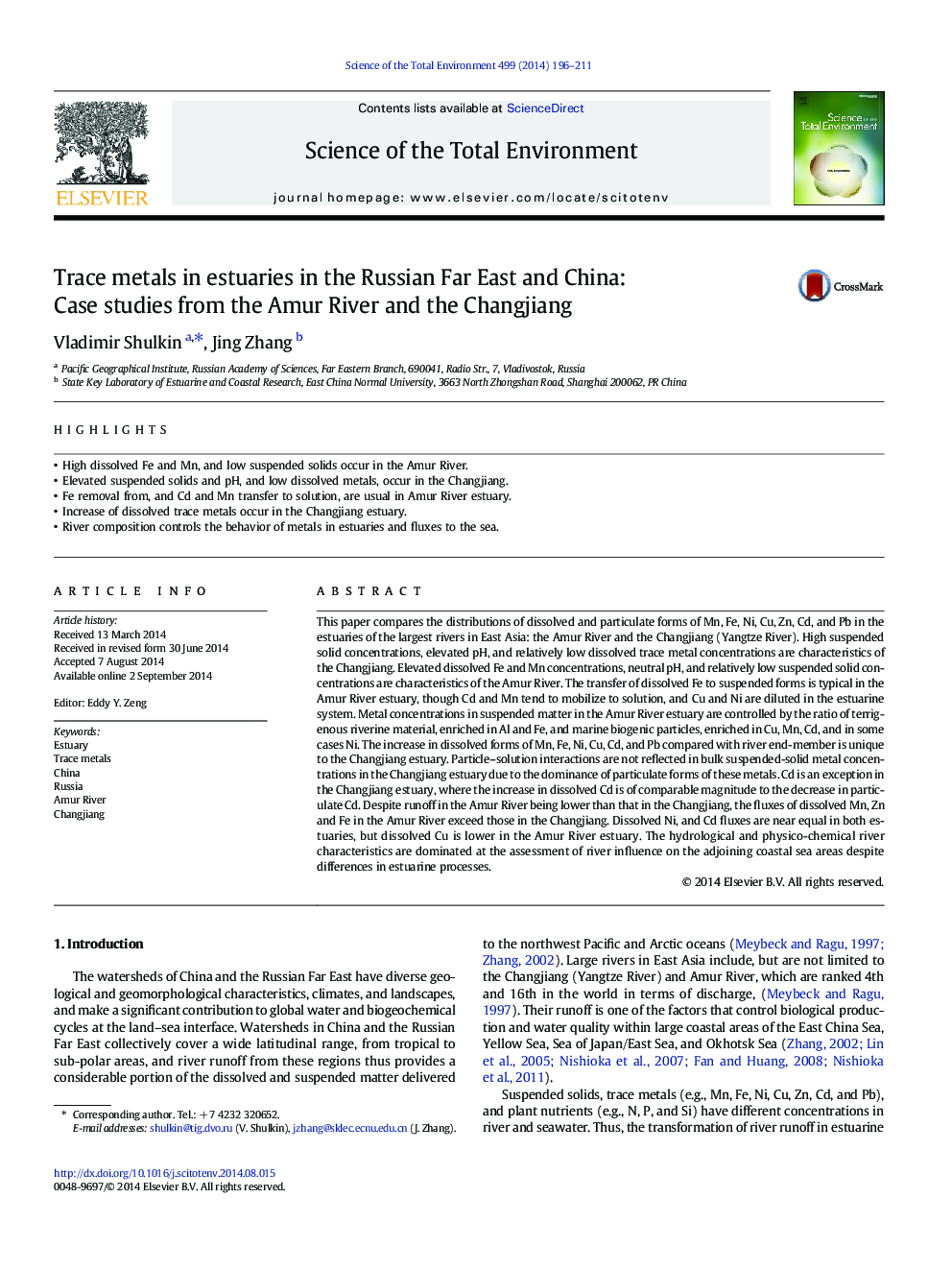| کد مقاله | کد نشریه | سال انتشار | مقاله انگلیسی | نسخه تمام متن |
|---|---|---|---|---|
| 6328892 | 1619774 | 2014 | 16 صفحه PDF | دانلود رایگان |
- High dissolved Fe and Mn, and low suspended solids occur in the Amur River.
- Elevated suspended solids and pH, and low dissolved metals, occur in the Changjiang.
- Fe removal from, and Cd and Mn transfer to solution, are usual in Amur River estuary.
- Increase of dissolved trace metals occur in the Changjiang estuary.
- River composition controls the behavior of metals in estuaries and fluxes to the sea.
This paper compares the distributions of dissolved and particulate forms of Mn, Fe, Ni, Cu, Zn, Cd, and Pb in the estuaries of the largest rivers in East Asia: the Amur River and the Changjiang (Yangtze River). High suspended solid concentrations, elevated pH, and relatively low dissolved trace metal concentrations are characteristics of the Changjiang. Elevated dissolved Fe and Mn concentrations, neutral pH, and relatively low suspended solid concentrations are characteristics of the Amur River. The transfer of dissolved Fe to suspended forms is typical in the Amur River estuary, though Cd and Mn tend to mobilize to solution, and Cu and Ni are diluted in the estuarine system. Metal concentrations in suspended matter in the Amur River estuary are controlled by the ratio of terrigenous riverine material, enriched in Al and Fe, and marine biogenic particles, enriched in Cu, Mn, Cd, and in some cases Ni. The increase in dissolved forms of Mn, Fe, Ni, Cu, Cd, and Pb compared with river end-member is unique to the Changjiang estuary. Particle-solution interactions are not reflected in bulk suspended-solid metal concentrations in the Changjiang estuary due to the dominance of particulate forms of these metals. Cd is an exception in the Changjiang estuary, where the increase in dissolved Cd is of comparable magnitude to the decrease in particulate Cd. Despite runoff in the Amur River being lower than that in the Changjiang, the fluxes of dissolved Mn, Zn and Fe in the Amur River exceed those in the Changjiang. Dissolved Ni, and Cd fluxes are near equal in both estuaries, but dissolved Cu is lower in the Amur River estuary. The hydrological and physico-chemical river characteristics are dominated at the assessment of river influence on the adjoining coastal sea areas despite differences in estuarine processes.
Journal: Science of The Total Environment - Volume 499, 15 November 2014, Pages 196-211
